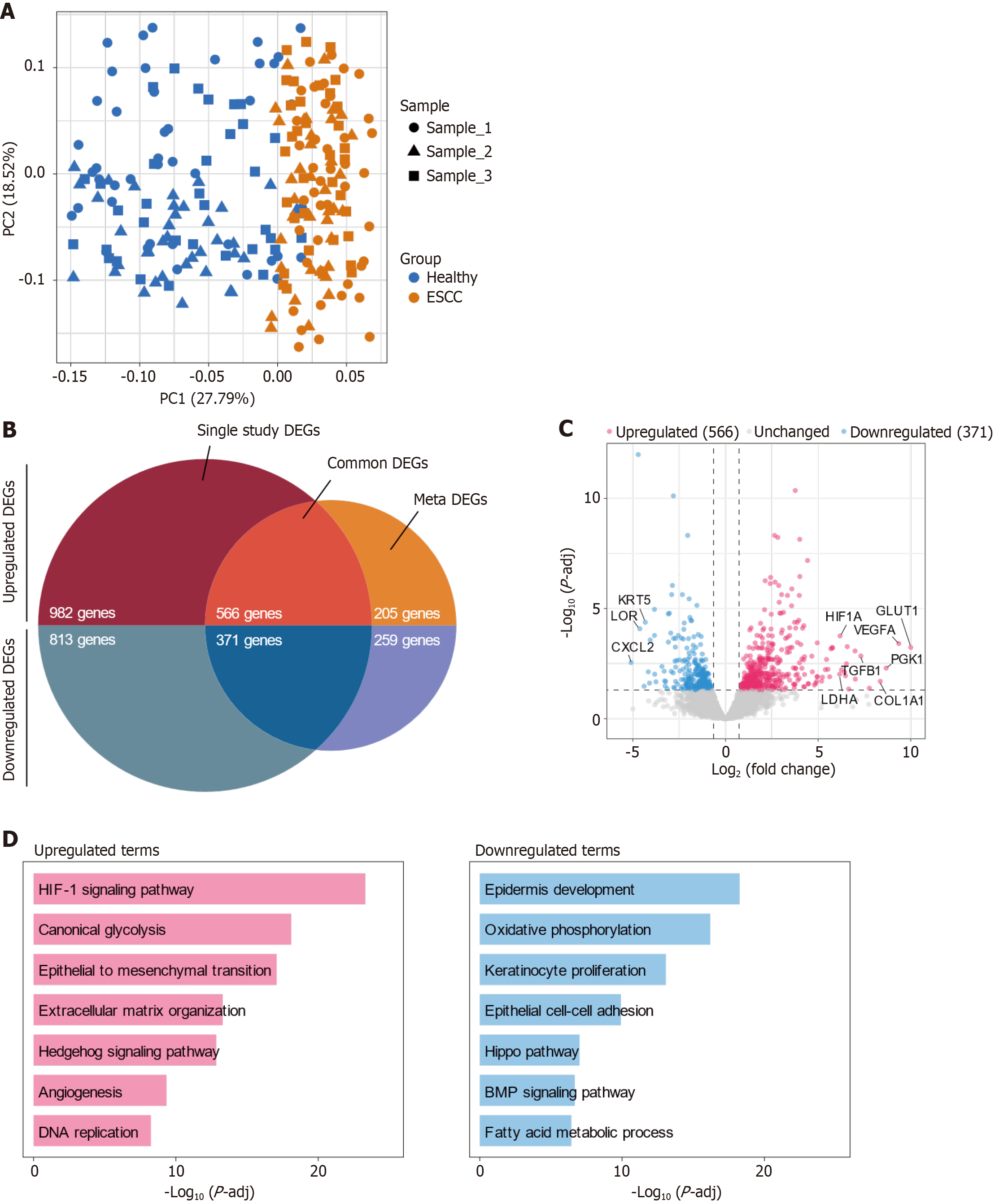Copyright
©The Author(s) 2025.
World J Gastrointest Oncol. Mar 15, 2025; 17(3): 103450
Published online Mar 15, 2025. doi: 10.4251/wjgo.v17.i3.103450
Published online Mar 15, 2025. doi: 10.4251/wjgo.v17.i3.103450
Figure 1 Transcriptomic analysis of esophageal squamous-cell carcinoma reveals significant gene and pathway modulation.
A: Principal component analysis of 115 healthy (blue) and 115 esophageal squamous-cell carcinoma (ESCC) (orange) tissue samples sourced from multiple public databases. Each symbol represents an individual sample, with different shapes (circles, triangles, squares) corresponding to three distinct datasets (Sample_1, Sample_2, Sample_3). The first two principal components (PC1 and PC2) explain 27.79% and 18.52% of the variance, respectively, illustrating a clear separation between healthy and ESCC groups with minimal batch effects; B: Venn diagram of differentially expressed genes (DEGs) shows the overlap of DEGs identified in single-study analyses (red) and meta-analyses (blue), with 566 genes consistently upregulated and 371 genes consistently downregulated across analyses, indicating their potential roles in ESCC pathogenesis; C: Volcano plot of DEGs displaying upregulated (red dots), unchanged (gray dots), and downregulated (blue dots) genes based on log2(fold change) and -log10(p-adjusted value). Significant genes such as GLUT1, PGK1, VEGFA, COL1A1, and TGFB1 are marked for their substantial upregulation, while notable downregulated genes include KRT5, LOR, and CXCL2, highlighting shifts in cellular function relevant to cancer progression; D: Bar graphs depicting enriched biological pathways based on gene ontology analysis. Upregulated pathways (pink bars) include HIF-1 signaling, glycolysis, and epithelial to mesenchymal transition, indicating adaptations in cellular energy metabolism and invasiveness. Downregulated pathways (blue bars) such as epidermis development and oxidative phosphorylation suggest significant deviations from normal epithelial functions and metabolic processes. DEG: Differentially expressed gene.
- Citation: Chen X, Liu HY, Zhou WB, Zhang LL, Huang J, Bao DW. Hypoxia-inducible factor 1-alpha and lactate dehydrogenase-A axis in metabolic changes and aggression in esophageal squamous-cell carcinoma. World J Gastrointest Oncol 2025; 17(3): 103450
- URL: https://www.wjgnet.com/1948-5204/full/v17/i3/103450.htm
- DOI: https://dx.doi.org/10.4251/wjgo.v17.i3.103450









